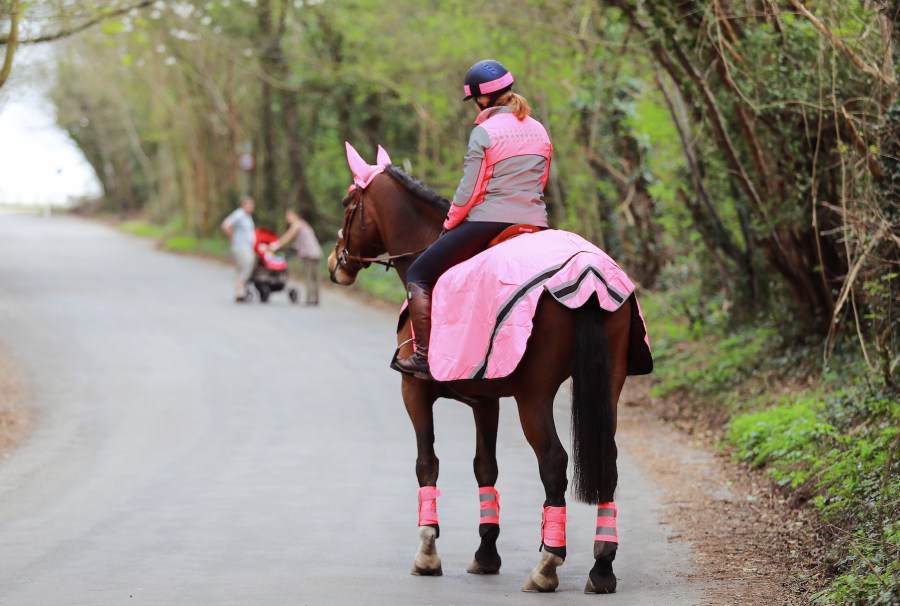In partnership with Equisafety…
Hacking out on a spooky horse is not always the care-free, relaxing and fun ride you’d hope for — and sometimes it can become dangerous. Even horses who are bombproof can be caught by surprise when the unexpected happens. Australian horseman Jason Webb, of Your Horsemanship, explains how to take control of the situation.
1 Practice steering
Make sure you can steer left and right so you can turn your horse anytime and anywhere. Turning is more important than being able to stop, as controlling direction is key to dealing with a spook. Put the work in at home.
2 Control his initial response
Your horse will always look to move away from any perceived threat, and your job is to manage this initial response. If he tries to go left for instance, simply turn him back to the right. In essence you are diffusing the spook using changes of direction.
3 Don’t focus on the spooky object
If you stare at something you think your horse may spook at, you are drawing his attention to it and then he probably will spook. This can be a huge block for some riders; they are always on the lookout for the next thing to cause a problem. Chances are if you ignore it, your horse will too.
4 Don’t let him take over
When a horse spooks, riders often look in the direction their horse is trying to go. By doing this, you are handing the reins to a nervous, flighty horse. He will go where you look and this can be dangerous as he will take charge if you let him.
5 Focus on one direction
To get your horse past a scary object, focus your attention on where you want to go. Pick a path and keep steering your horse towards it. If he’s looking at the object, don’t turn him as you want him to spot the way past and recognise this is his route out of the situation.
6 Encourage forward motion
Use your upper legs and body to encourage your horse forwards. If he halts or is rooted to the spot, tap with your lower leg until he takes a step forward and then stop tapping. You want him to feel reassured that he’s doing the right thing and releasing the pressure is your signal to him that he is.
Your horse may want to turn away from the spooky object, but keep correcting him. Make sure you’re not holding on to his mouth with too tight a rein as this could result in a rear or spin.
7 Release with your hands
If your horse tries to go backwards, push your hands forward so you’re not restricting him and tap with your legs. When he stops, release the leg pressure. By doing this you’re allowing him to make a decision: if he goes in the wrong direction (backwards), you’re not letting him off the hook because your leg is on. If he does the right thing (goes forward), you’re releasing your leg pressure. If he still panics, simply start again and repeat the sequence.
8 Bring down the adrenalin
If the situation is escalating, take your legs off and give your horse a break for 30 seconds or so before asking him to go forward again. This will bring down his adrenalin levels and can be enough to get him ‘unstuck’, so that his attention returns to you.
9 Be patient
The result you’re after is for your horse to spot the path you want him to take and sneak past the scary object – if he does this give him a fuss. Don’t let him run at it though as he may just keep running. Instead, if he tries this, turn him back to the object and start again. It takes patience.
10 Train at home
Dealing with spooking is a process, and the techniques you use should all be practised at home. Get yours mapped out so that you can use it when needed. If you know you can handle a spook, you’ll be less nervous and your horse will benefit too.
Train at home around objects you think he’ll find scary. Balloons, cones, flags – anything to help him desensitise. Groundwork is also useful as it encourages your horse to see you as a leader and take confidence from following you.
Words by Julie Brown
This content is brought to you in partnership with Equisafety, high viz clothing for horses and riders.









